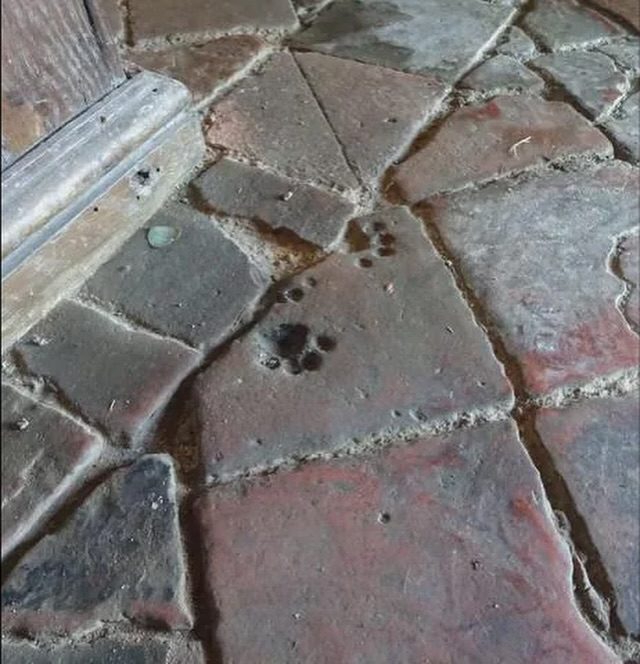Cat Paw Prints Preserved in 12th-Century Floor Tiles at St. Peter’s Church Capture a Playful Moment Frozen in Time
Sometimes, history doesn’t leave behind grand monuments or epic tales — sometimes, it leaves behind the soft imprint of a cat’s paws. At St. Peter’s Church in Wormleighton, England, a set of tiny paw prints from a long-forgotten feline have been preserved in the 12th-century floor tiles, turning an ordinary patch of medieval craftsmanship into a silent, centuries-old story of life and curiosity.

It’s easy to imagine the scene that led to those paw prints. Somewhere in the English countryside nearly 900 years ago, a craftsman was preparing wet clay tiles to be fired — the earthy smell of clay mixing with the smoke from nearby kilns. Perhaps the day was cool, the kind of gray morning typical of medieval England. And while the craftsman worked, a cat wandered by, padding softly across the damp clay before the tiles were set to harden. The marks, barely noticed then, became immortal once the clay was fired — a playful accident sealed in history.
Those prints have endured longer than most human lives or even the structures built to last forever. Through wars, storms, and countless footsteps of parishioners who came to pray, those little impressions have remained unchanged, resting quietly in the ancient floor of St. Peter’s Church. They remind us that history isn’t just about kings, battles, or religious ceremonies — it’s about the small, unintentional traces of everyday life that survive the centuries.
Archaeologists and historians often find similar imprints from medieval animals — dogs, cats, even chickens — across Europe. In an age before machines and sterile factories, life and work existed side by side. Cats roamed workshops and churches, chasing mice, curling up beside ovens, or simply wandering wherever they pleased. These paw prints are a testament to that coexistence — a glimpse into a time when animals and humans shared even the most sacred and industrious spaces.
What makes the Wormleighton prints so special is not just their age but their humanity — or perhaps their animality. They connect the present to the past in the most unexpected, tender way. Standing over those tiles today, one can’t help but smile at the thought of that medieval cat unknowingly making history. The church, dedicated to St. Peter and dating back to Norman England, carries the solemnity of faith and time. Yet right there, among its ancient stones, is the playful mark of a creature that likely had no idea its steps would be admired centuries later.
Such discoveries remind us that the past wasn’t always distant or grim — it was alive, full of simple, relatable moments. The craftsman who might have sighed at the mischievous paw prints could never have imagined that future generations would find them endearing. That’s the beauty of these small archaeological miracles: they humanize history, reminding us that people — and their cats — once lived, laughed, and moved through the same emotions we know today.
In a world obsessed with preserving great achievements, it’s humbling to realize that one of the most enduring marks from the 12th century came from a wandering animal’s curious steps. The cat, long gone, unknowingly became a part of history — its silent footprints whispering a story of innocence, chance, and time itself.



